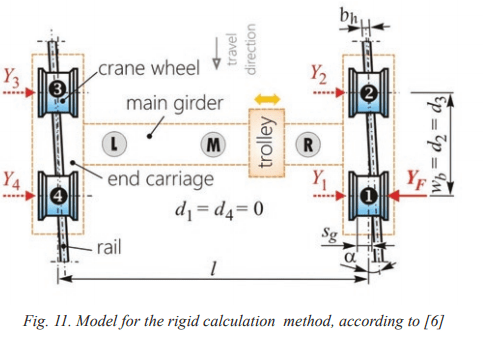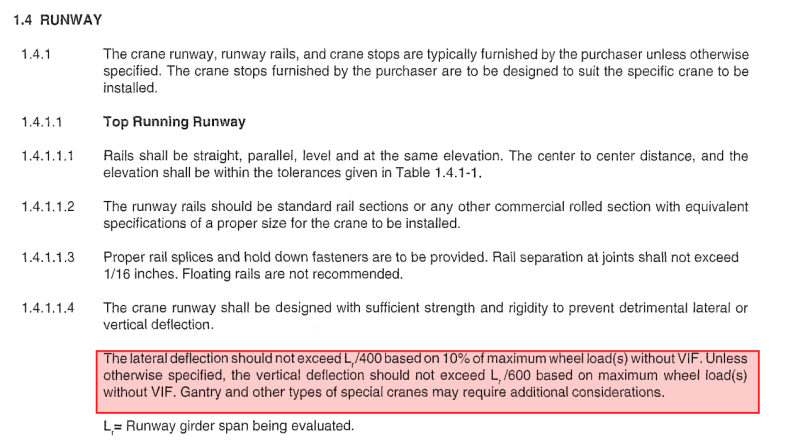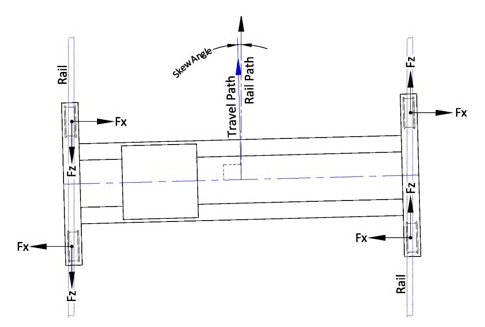I'm evaluating an existing building for an increased crane capacity. Client wants to go from 30 Ton to 35 Ton. Overhead double girder, top running.
Everything is looking okay, except for lateral deflection on one of the crane runway beams. The runway beam on one side is on the exterior gridline of the building and laterally braced at the columns. The other runway beam is connected with a horizontal truss to the adjacent runway beam and therefore much stiffer for lateral deflection.
Is it okay to assume the lateral (side thrust) loads will be distributed to the stiffer runway beam. Or, does each runway beam need to meet the deflection criteria separately?
Everything is looking okay, except for lateral deflection on one of the crane runway beams. The runway beam on one side is on the exterior gridline of the building and laterally braced at the columns. The other runway beam is connected with a horizontal truss to the adjacent runway beam and therefore much stiffer for lateral deflection.
Is it okay to assume the lateral (side thrust) loads will be distributed to the stiffer runway beam. Or, does each runway beam need to meet the deflection criteria separately?

![[smile] [smile] [smile]](/data/assets/smilies/smile.gif)



